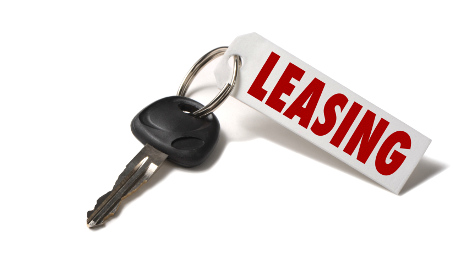Some subprime elements of leasing reminiscent of 1990s

By subscribing, you agree to receive communications from Auto Remarketing and our partners in accordance with our Privacy Policy. We may share your information with select partners and sponsors who may contact you about their products and services. You may unsubscribe at any time.
LAWRENCEVILLE, Ga. –
Black Book vice president of lender solutions Barrett Teague recollected leasing activities back in the early 1990s; a span when subprime leasing as well as contracts stretching as long as 60 months made their way into finance company portfolios. Teague pointed out that recessionary conditions prompted consolidation and some elimination of that leasing activity.
But nowadays with new-vehicle leasing penetration at or above 30 percent, it’s almost like the 1990s are back in some ways. It’s also why Black Book published a white paper titled, Strategies To Help Maintain Profitable Leases In Your Portfolio.
During a phone conversation with SubPrime Auto Finance News on Tuesday, Teague explained how leasing is on the rise and not just for automakers and their captive finance companies turning luxury metal or vehicles with strong residual values.
“The manufacturers are doing a great job of bringing better and better merchandise and inventory to the marketplace,” Teague said. “Cars are performing significantly better for a longer period of time. I really think that’s part of what’s helping to fuel this leasing marketplace. Those vehicles can go through a standard or even a longer than standard lease cycle and still offer a great, valuable piece of inventory to a dealer to put back on their lot three to six years from now.
“We’re seeing and hearing conversations now from lenders that are re-entering that subprime market and the lease-here, pay-here market,” he continued. “We know that the quality of the inventory is out there. We just want to have the opportunity to offer some of this data to people so they can make the right decisions on how to structure their own portfolios when it comes to building a lease portfolio.”
The white paper produced by Black Book Lender Solutions offers what Teague explained are distinct examples leveraging collateral data to show how certain vehicles may be candidates for longer lease terms as an alternative strategy to leveraging incentives.
Subscribe to Auto Remarketing to stay informed and stay ahead.
By subscribing, you agree to receive communications from Auto Remarketing and our partners in accordance with our Privacy Policy. We may share your information with select partners and sponsors who may contact you about their products and services. You may unsubscribe at any time.
Teague pointed out this shift can help finance companies identify the right vehicles for longer terms by showing the collateral’s rate of depreciation, whereby certain vehicles will hold a stronger opportunity for off-lease remarket after 48 months rather than the more traditional 36-month lease term.
“It didn’t overly surprise us because we’ve always looked at which vehicles would perform better at different lengths on the loan side,” he said when the Black Book team discovered the differences.
“Historically we’ve talked about how segments do perform differently and they change, which is why you’ve got to keep a close eye what’s going on in the collateral data market,” Teague continued. “But inside those specific segments, vehicles perform differently.
“It’s very interesting to watch that some vehicles hold their value great at 24 or 36 months, and another car will come from behind and actually outperform that vehicle in residual value in the 48- and 60-month areas,” he went on to say. “We really think people should be paying attention to those specific differences amongst the vehicles and segments.”
With a wide array of financing sources seeking more clarity about leasing, Teague indicated the Black Book team spent much of the past several weeks focused on generating this white paper, which can be downloaded here.
“We have had calls from powersports lenders, subprime lenders, used-car specific lenders on top of the traditional captive lenders,” he said.
“When you think of the leasing world, you think of the captives. But I will tell you the marketplace is opening so quickly,” Teague continued. “People who are considering getting into this marketplace probably have plans to do so.
"And if you don’t have plans to do so, and you feel like making an entry, it’s time to be thinking about it because the leasing market is exploding,” he went on to say.


